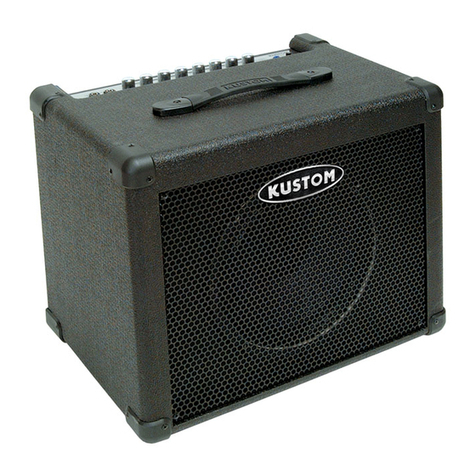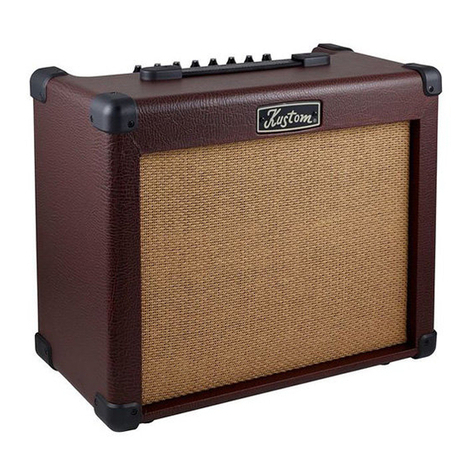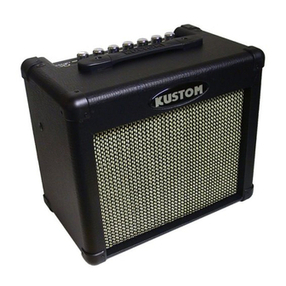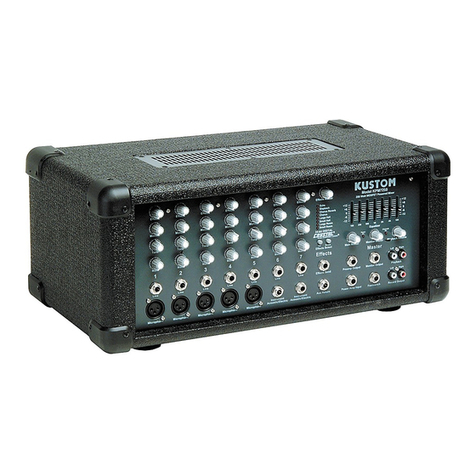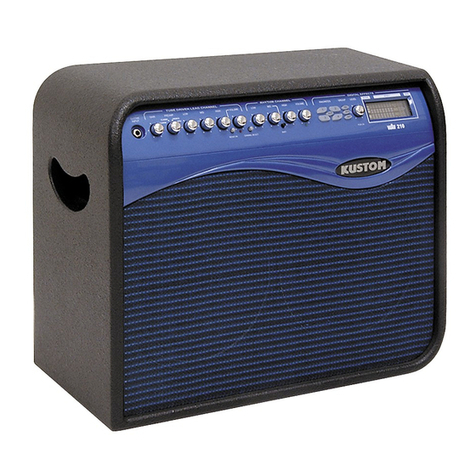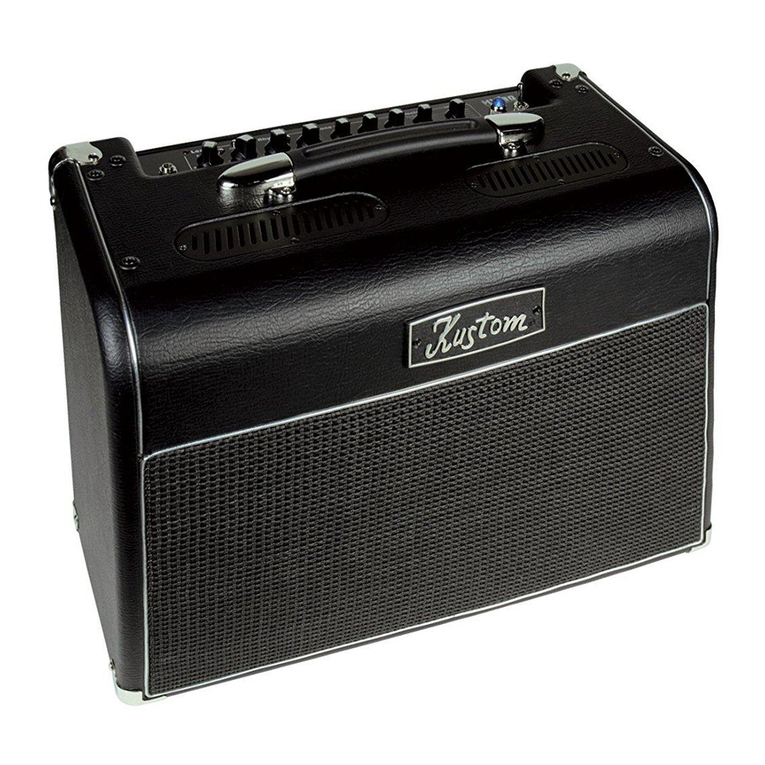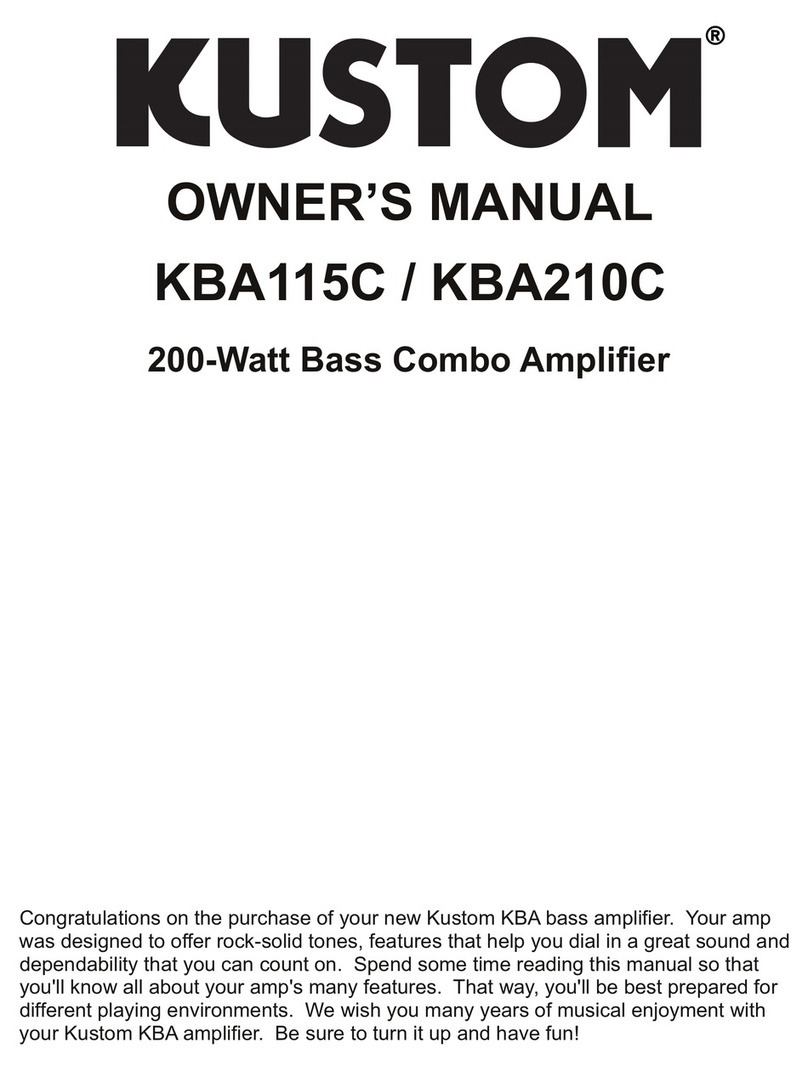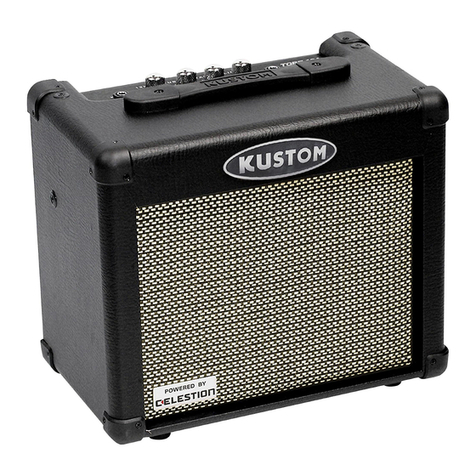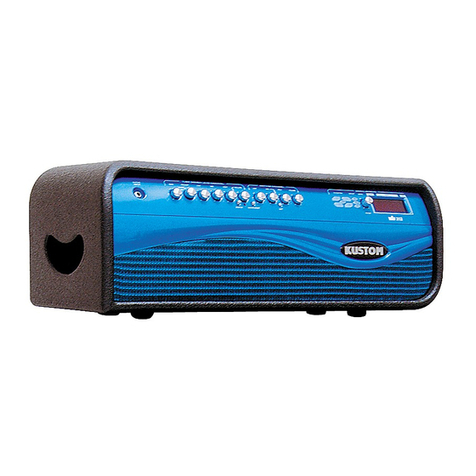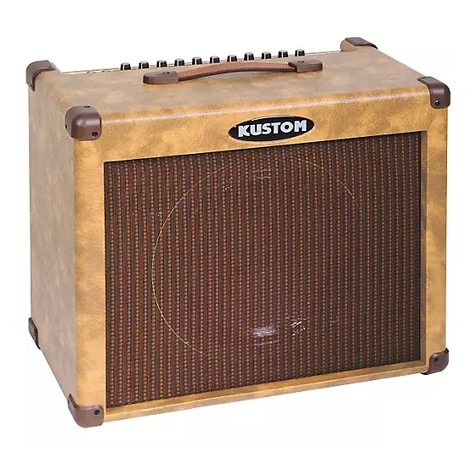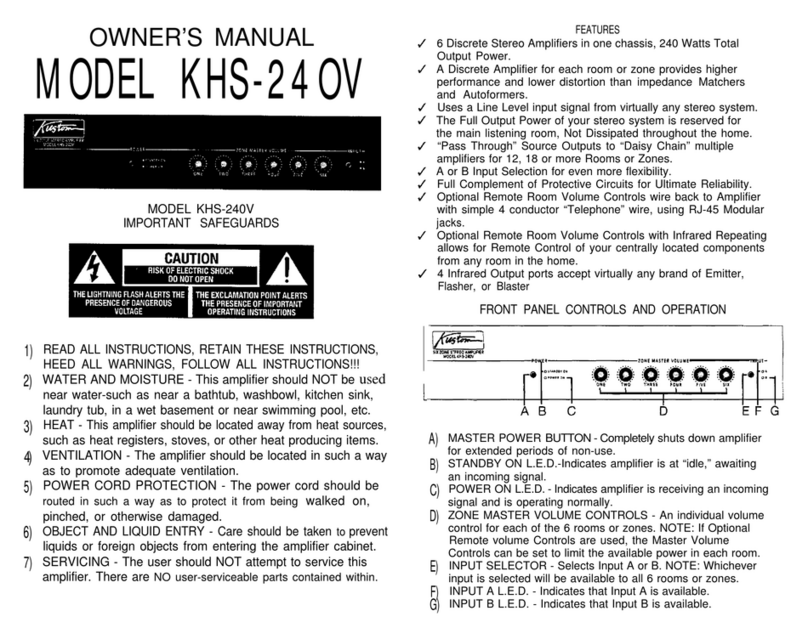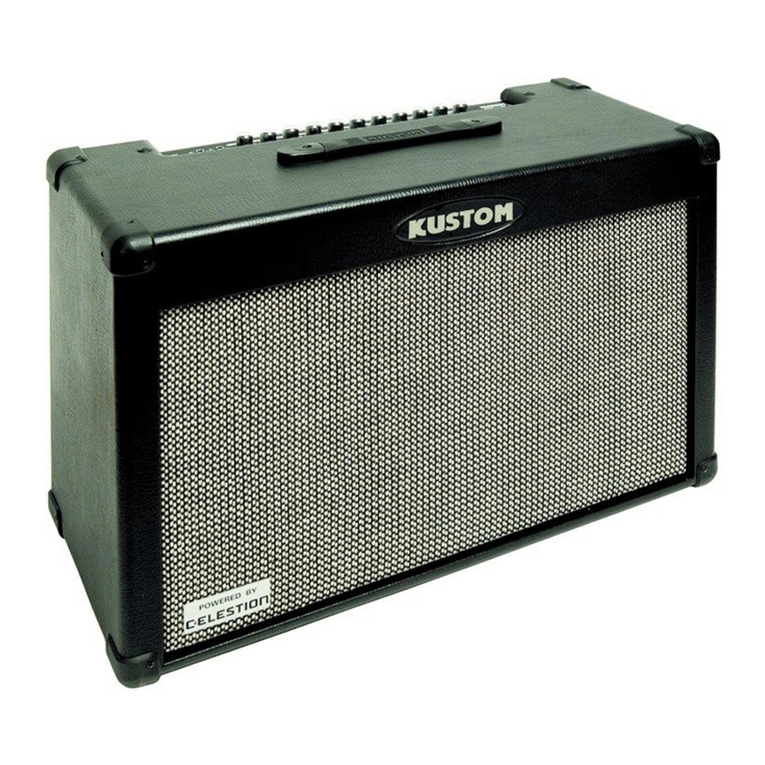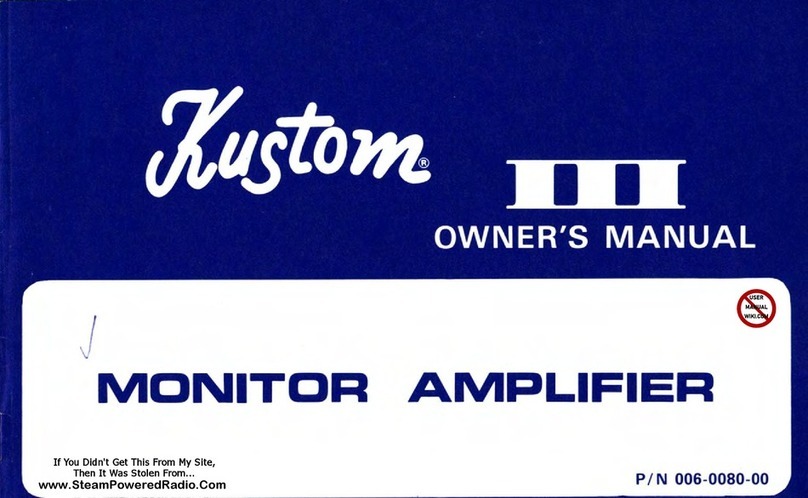
1.) Guitar Input Jack - this is a 1/4” 2-conductor input jack for plugging in your instrument. It is intended for guitars but will accept other
instruments as well.
2.) Lead Channel On LED - when this LED light is on, it indicates that the Lead Channel is active.
3.) Lead Gain - adjust this clockwise to increase the amount of distortion. Lower ranges of the control, you get a less distorted sound. As you
increase the gain, you add tremendous amounts of distortion to the signal.
4.) Gain Boost Switch - this switch will add more gain to the Lead Channel.
5.) Lead Volume - this is a volume control for the Lead Channel ONLY.
6.) EQ Mod Switch - this switch selects between two preamp tonalities, each offers a different tonal variation.
7.) Lead Bass - this passive EQ adjusts the low frequency equalization of the amplier. For tighter low-end response, set the Bass control to
lower settings. This is particularly helpful when using the amp at very loud volume levels.
8.) Lead Middle - this passive EQ adjusts the midrange equalization of the amplier. It interacts with the Bass and Treble EQ as described
in the Treble EQ section below. For a heavier, more distorted sound, set the Middle lower. For more of a vintage-style, cleaner sound, set the
Middle higher.
9.) Lead Treble - this passive EQ adjusts the high frequency equalization of the amplier, but also interacts with the Bass and Middle controls
as follows: As Treble is increased, Bass automatically decreases and the Middle slides down in frequency. Conversely, if Treble is decreased,
Bass automatically increases and the Middle slides up in frequency. This interaction is typical of classic, passive tone controls and is respon-
sible for the increased effectiveness of such a simple system.
10.) Channel Select Switch - this switch selects between the Lead or Rhythm Channel.
11.) Rhythm Channel On LED - when this LED light is on, it indicates that the Rhythm Channel is active.
12.) Rhythm Gain - adjust this clockwise to increase the amount of gain of the Rhythm Channel. The gain is applied before the tone controls.
13.) Bright Switch - this enhances upper Treble frequencies and helps provide clarity to darker sounding guitars.
14.) Rhythm Volume - this is a volume control for the Rhythm Channel only.
15.) Rhythm Bass - this passive EQ adjusts the low frequency equalization of the amplier. For tighter low-end response, set the Bass control
to lower settings. This is particularly helpful when using the amp at very loud volume levels.
16.) Overdrive - this increases the gain of the second stage of the 12AX7 preamp tube on the Rhythm Channel.
17.) Rhythm Middle - this passive EQ adjusts the midrange equalization of the amplier. It interacts with the Bass and Treble EQ as
described in the Treble EQ section below. For a heavier, more distorted sound, set the Middle lower. For more of a vintage-style, cleaner
sound, set the Middle higher.
18.) Rhythm Treble - this passive EQ adjusts the high frequency equalization of the amplier, but also interacts with the Bass and Middle
controls as follows: As Treble is increased, Bass automatically decreases and the Middle slides down in frequency. Conversely, if Treble is
decreased, Bass automatically increases and the Middle slides up in frequency. This interaction is typical of classic, passive tone controls and
is responsible for the increased effectiveness of such a simple system.
19.) Boost - this is a volume control for the overall amplier that can be used to boost the volume of solos. The optional HV footswitch can be
used to activate this boost
20.) Effects Level - this control adds the effects section and mixes it into the main signal. Sixteen different effects are available.
21.) Toggle Tap - this momentary switch performs different functions, depending on which effect is selected. Page 6 describes each effect in
detail and how to enhance its usefulness with this switch.
22.) Effects Program Select - this switch will select any of sixteen different effects. Page 6 describes each effect in detail.
23.) Effects Active - this switch engages the effects section. The footswitch over-rides this switch when it’s plugged into the amp.
24.) Jewel Light - this jewel light lets you know that the amplier is on.
25.) Power Switch - this switch turns on and off the AC power to the amp.
